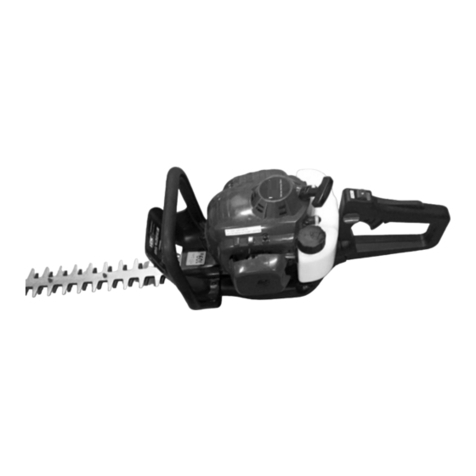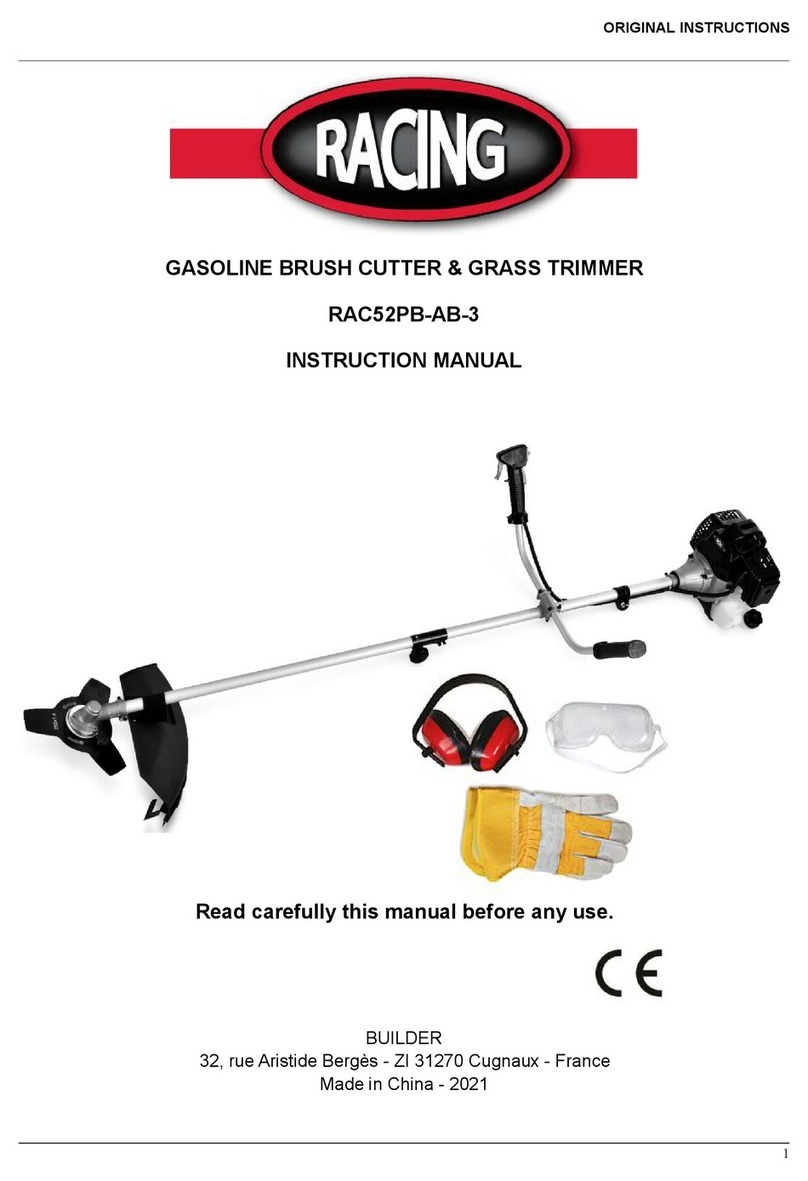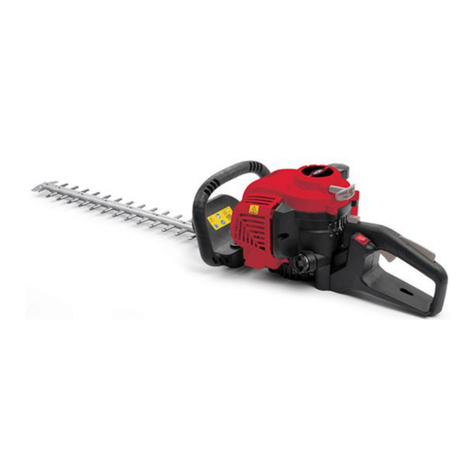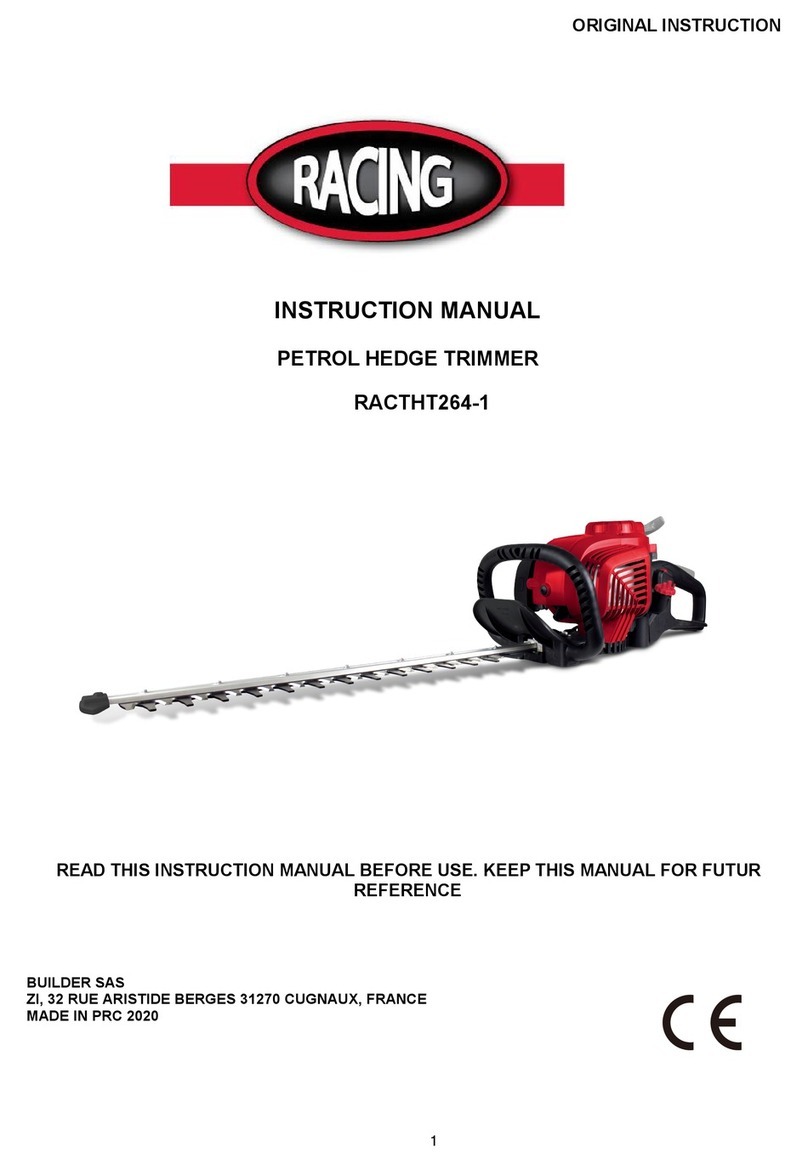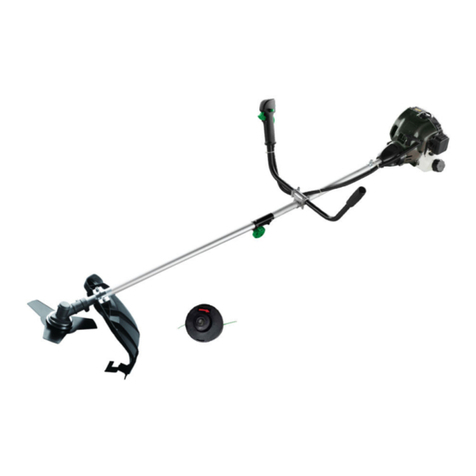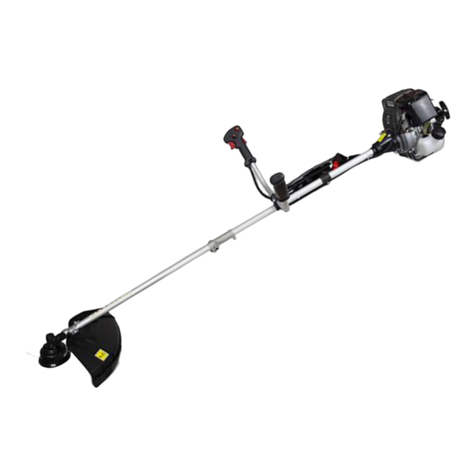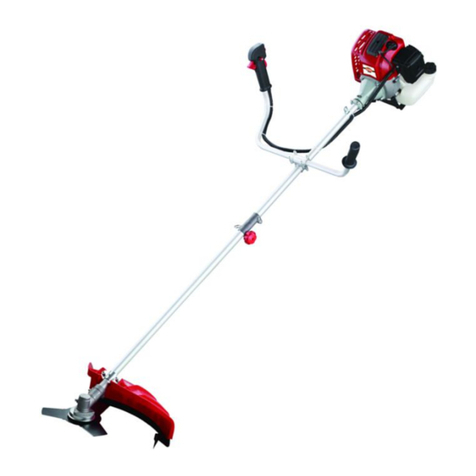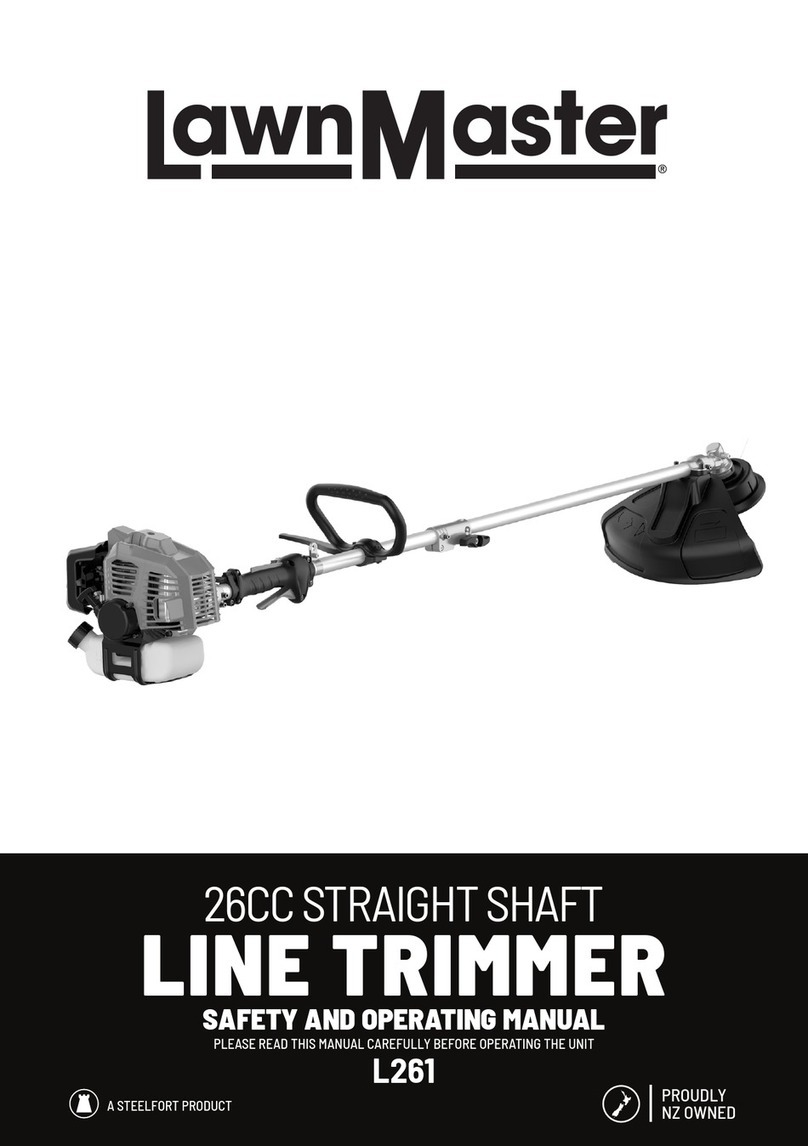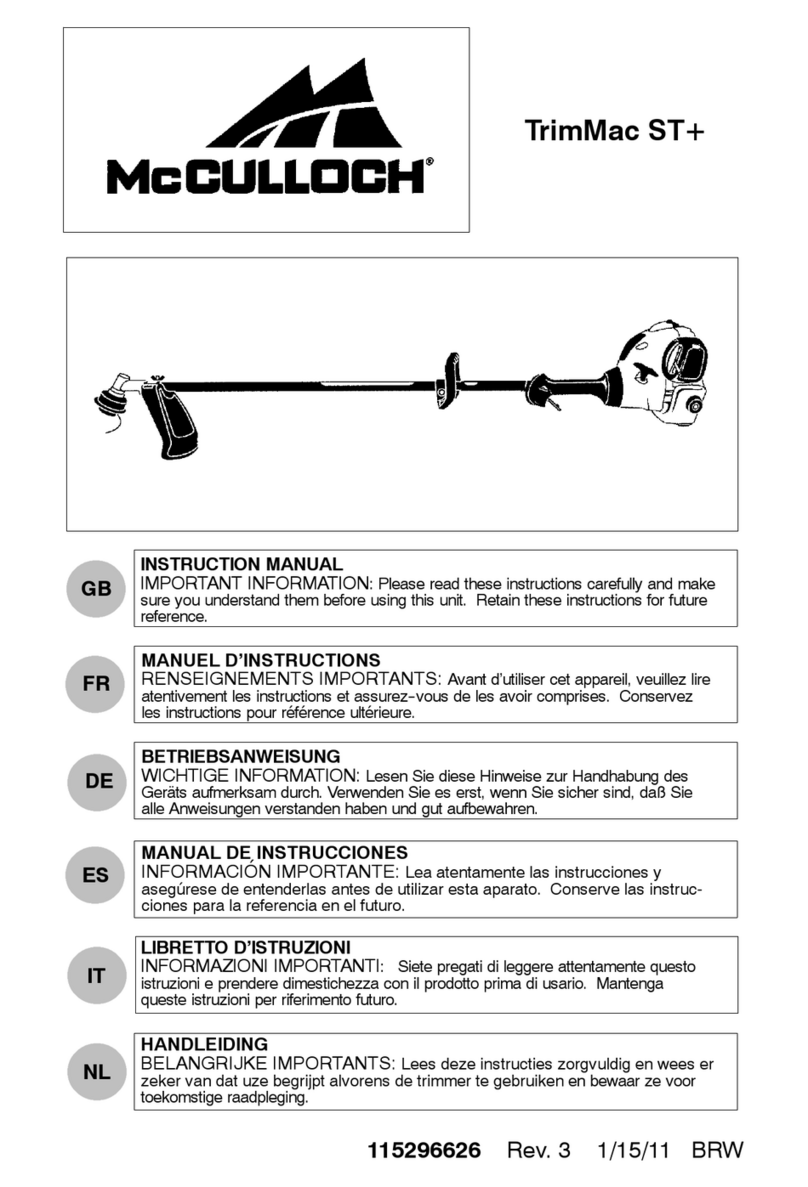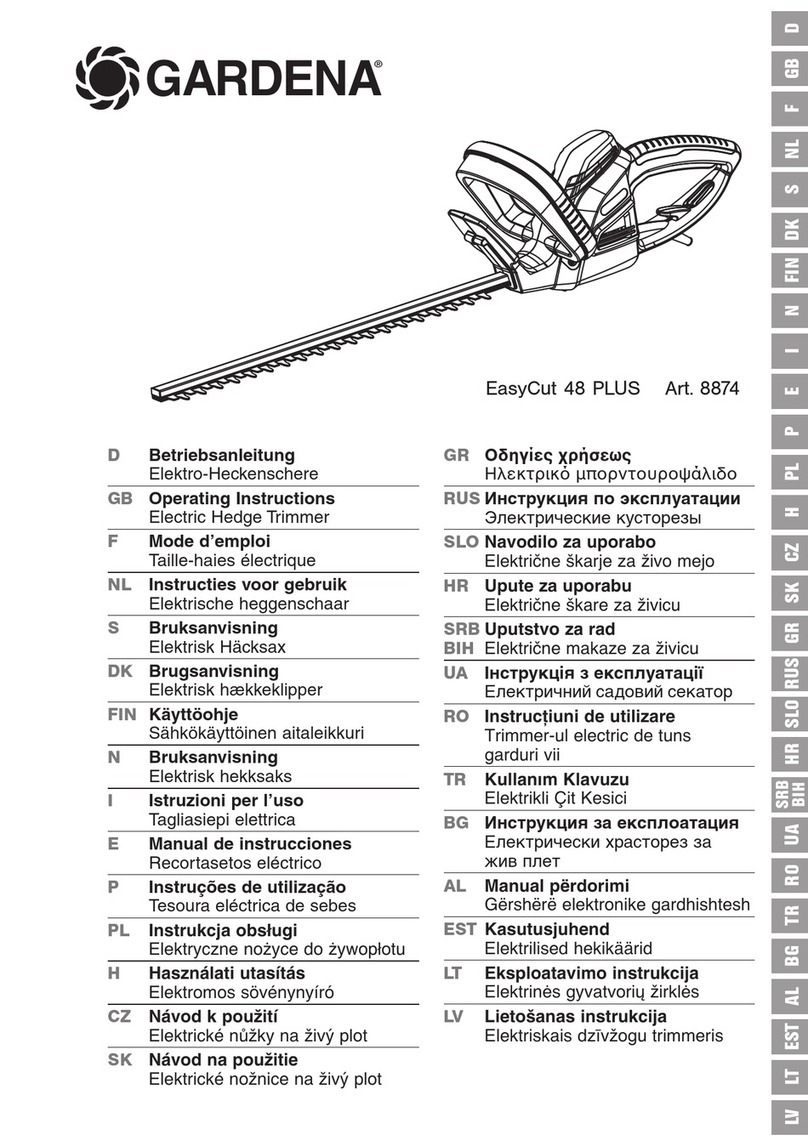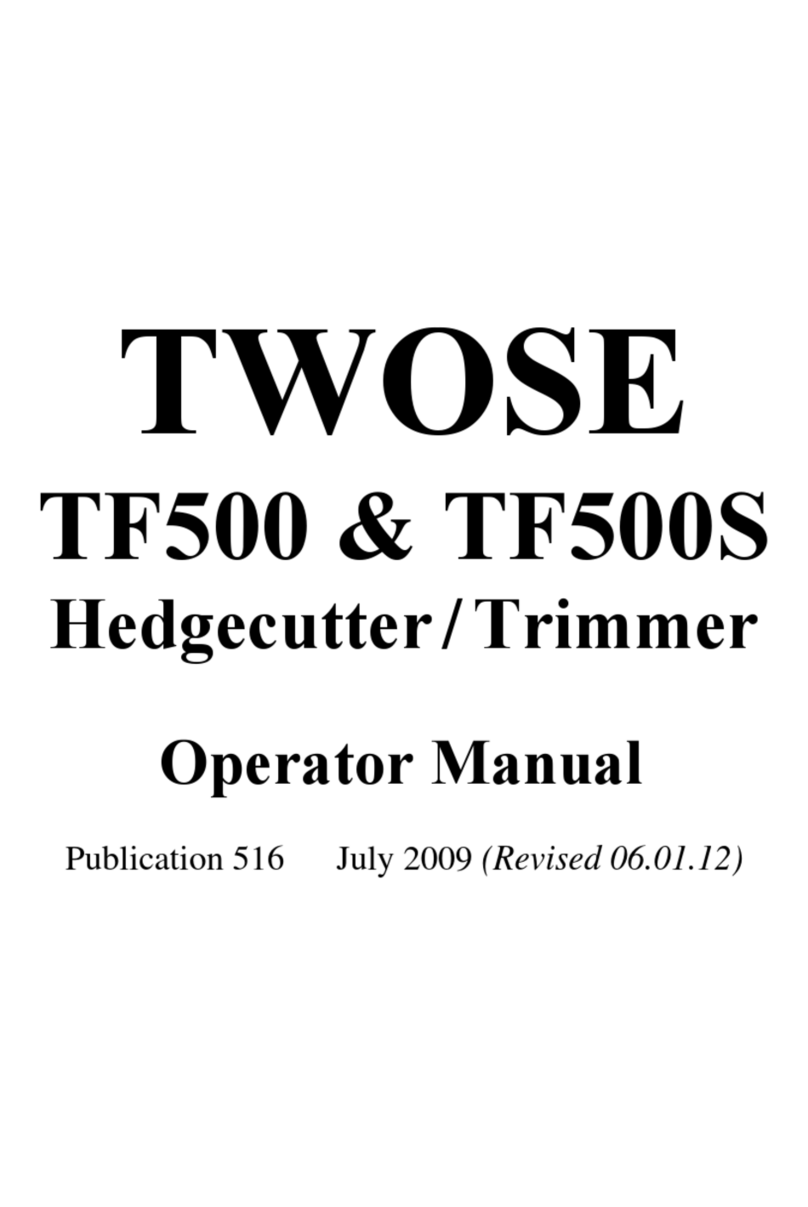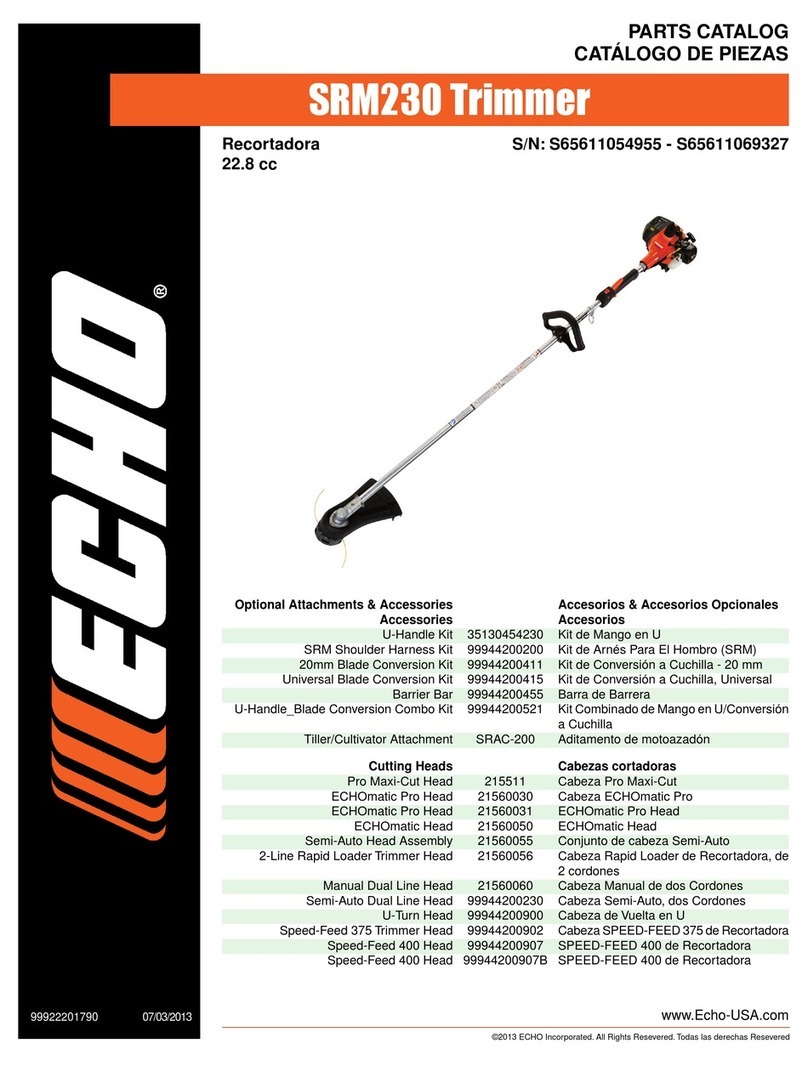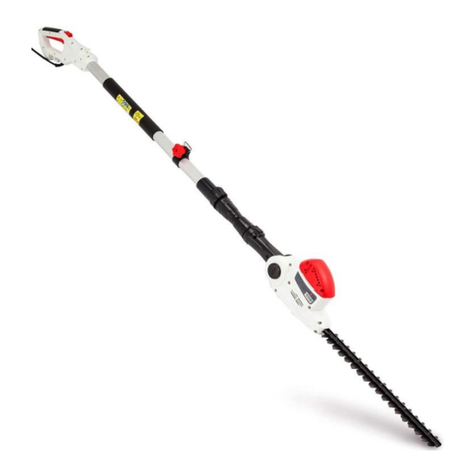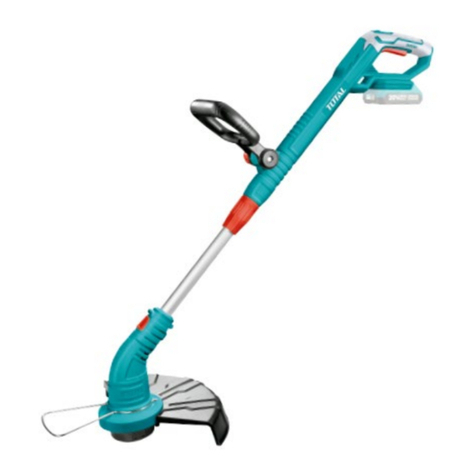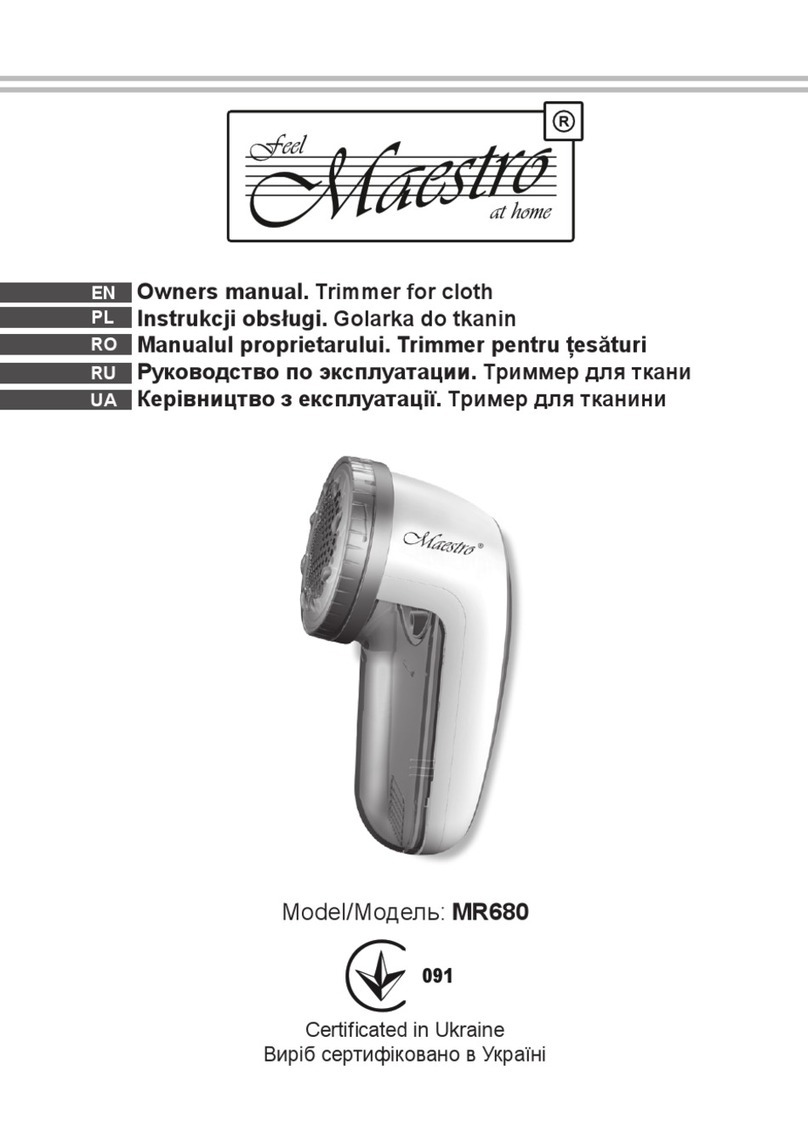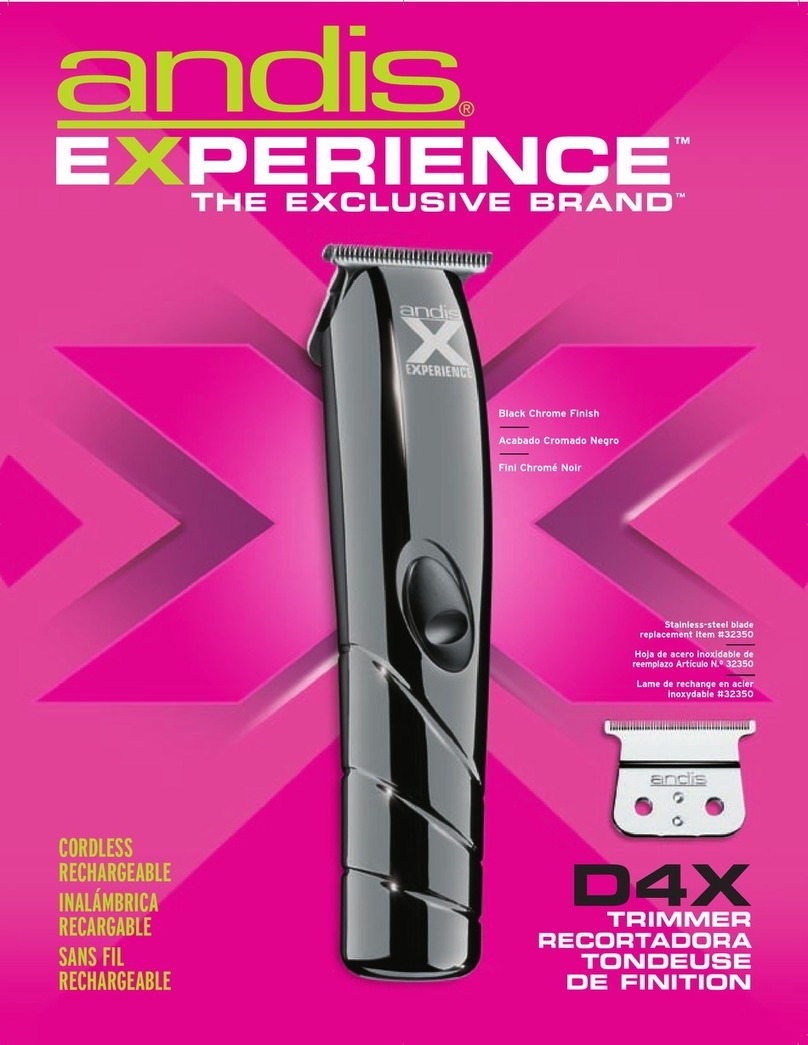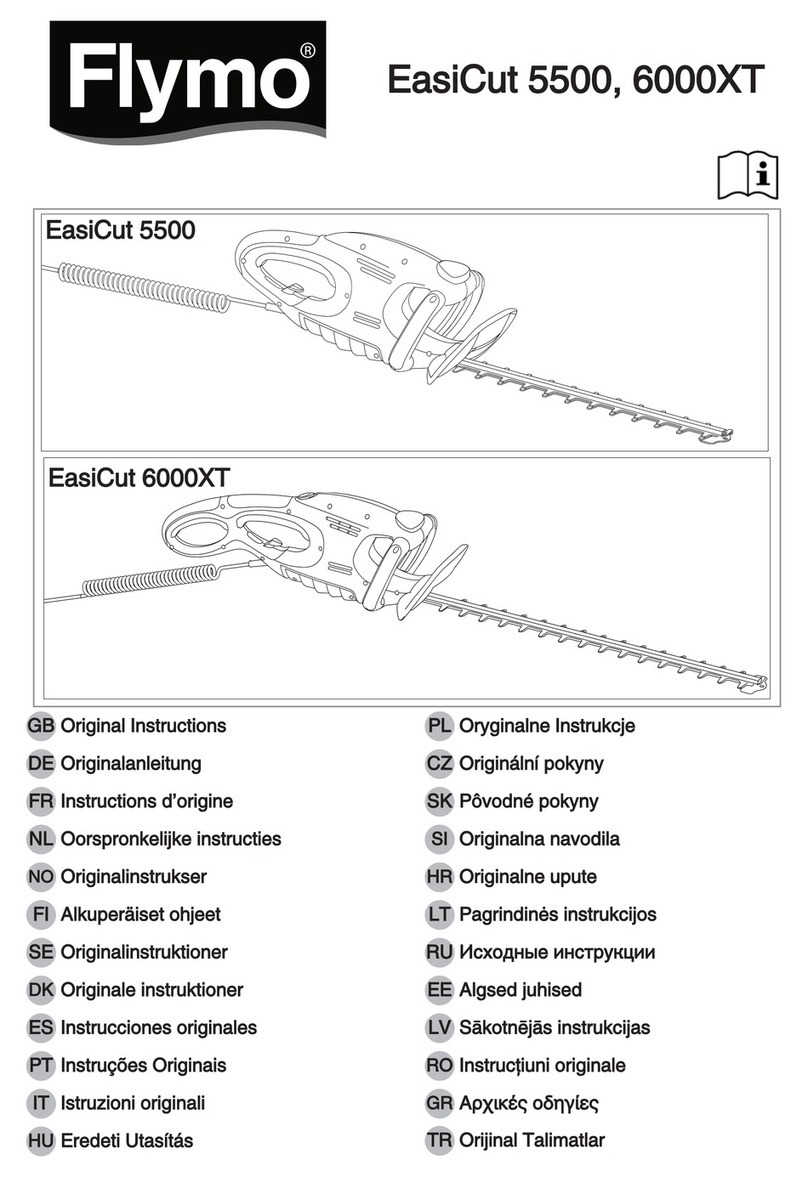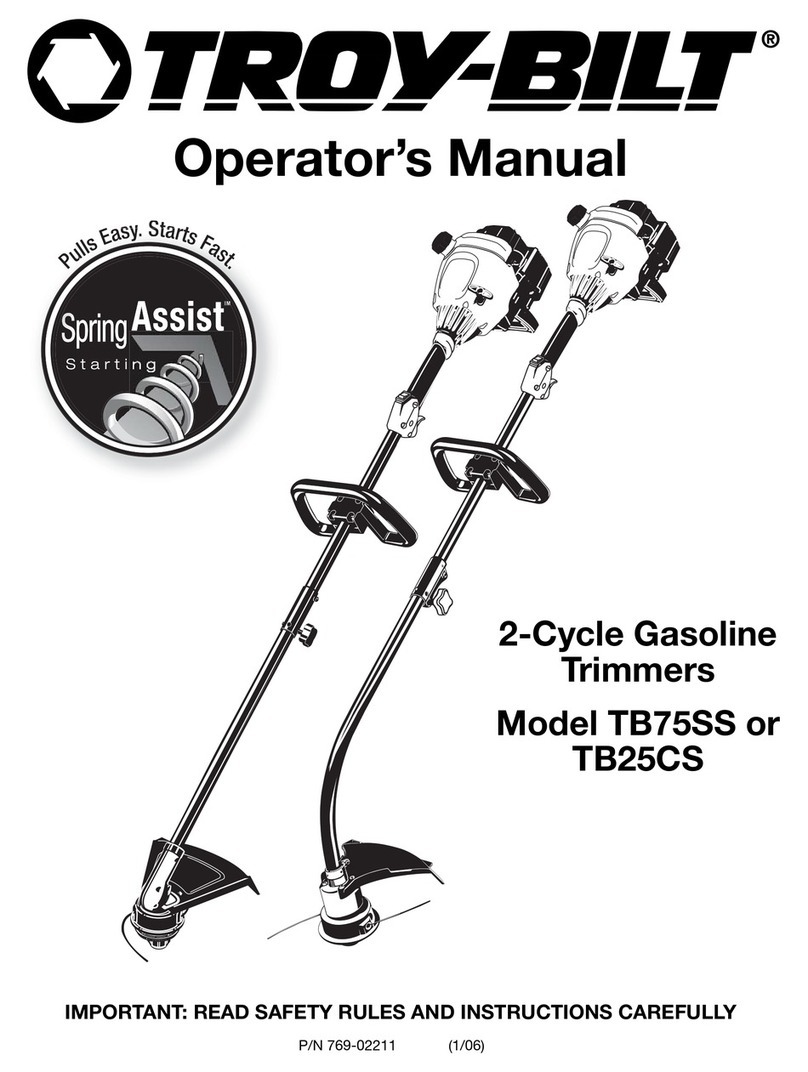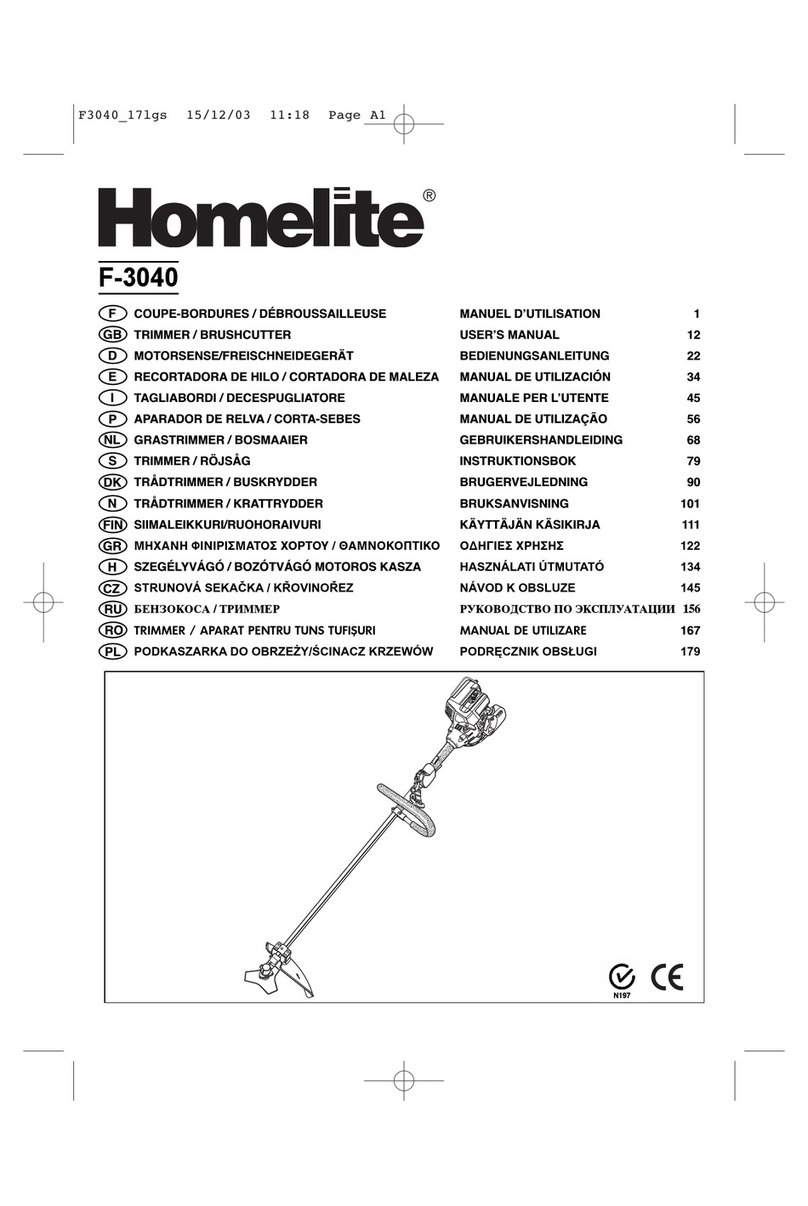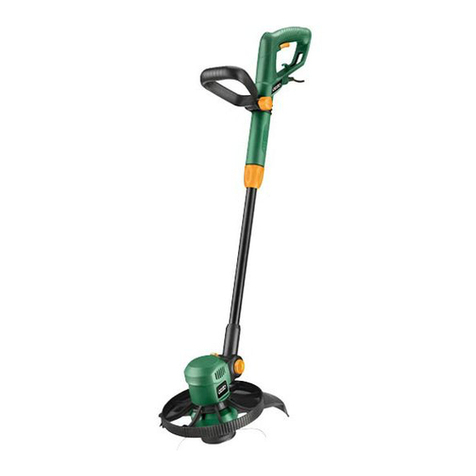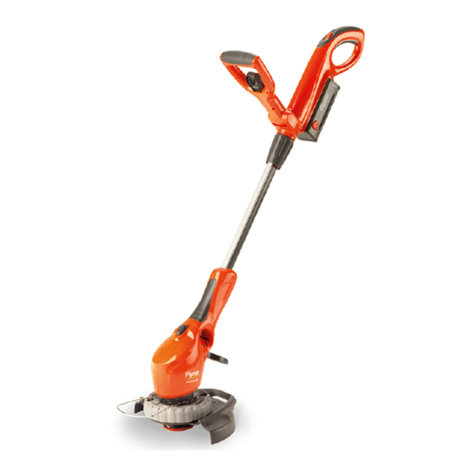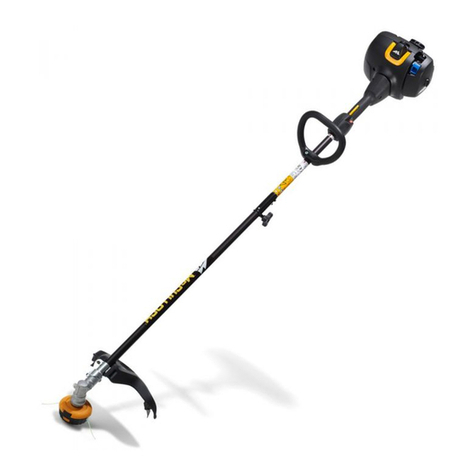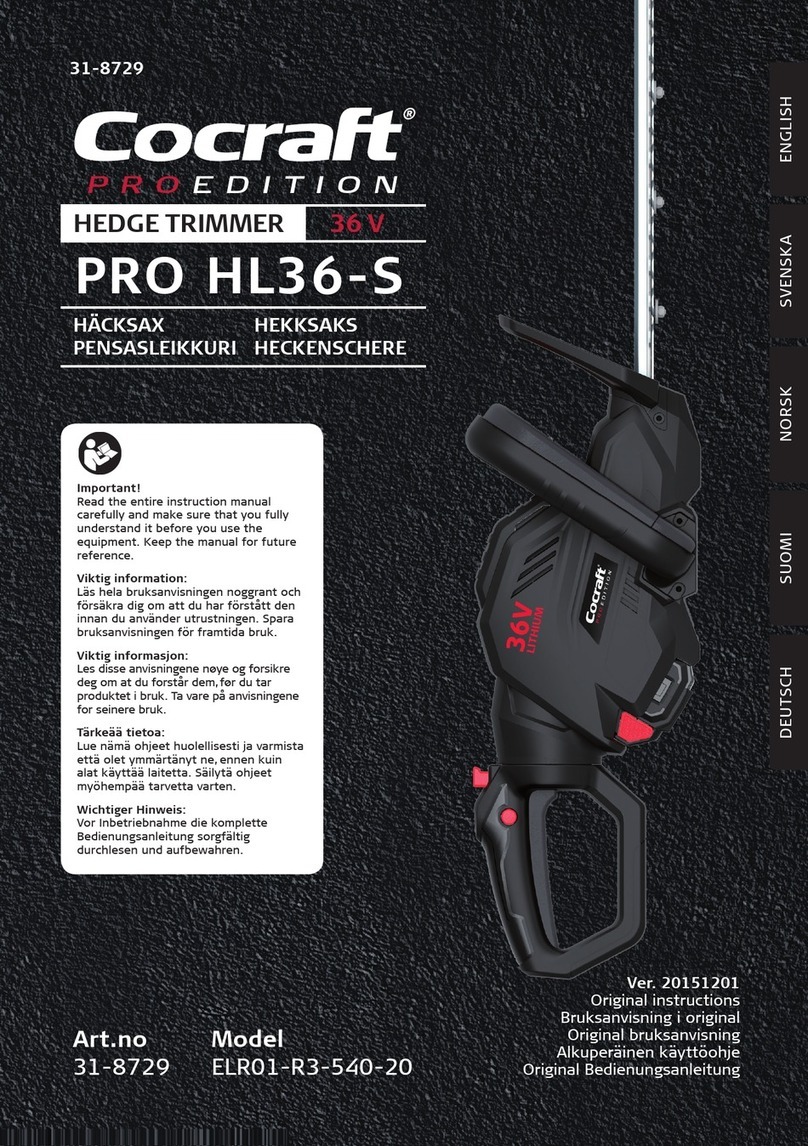5
•Use personal protective equipment. Safety equipment includes at least: safety shoes, safety goggles,
ear protectors, protective gloves, etc.
•Never work with an unsecured cutting tool. There is a risk of injury from projected objects.
•Before starting the hedge trimmer, remove all the keys and inspect if the tool is well assembled and
secure.
•Stay in alert at all times. Be attentive to what you are doing. Make use of your common sense. Do not
use the tool when you are tired. Never use the brushcutter under the influence of alcohol, drugs or
drugs that alter or decrease concentration. Also do not use the tool when you’re sick. .
•After using the motorized machine for an extended period, you may be subject to circulation problems
in your hands. You have the possibility to extend the duration of use by wearing suitable gloves and
taking breaks regularly. Please note that the operating time of the motorized machine is shortened due
to discomfort of the user due to poor circulation, too low outside temperature or excessive driving
power of the machine during the work.
•Be alerted to damaged components. Check the machine before using it. Damaged components must
be repaired or replaced as soon as possible by authorized persons. Defective switches must be
replaced by an authorized dealer. Do not use the machine when it cannot be switched off or on by
means of a switch. When repairs are required, please contact your nearest dealer.
•Before carrying out any adjustments or maintenance operations, it is essential that the motor is always
switched off. This also applies to all work performed at the cutting head. Remove the spark plug from
the engine.
•Use only approved components. Only use spare parts identical to those you are replacing during
maintenance or repair work. Contact directly your authorized dealer for advice. Do not use metal
multi-piece swivel chains and flail blades.
•When transporting and storing the tool, make sure that it is secure; put the protective device on the
blade is being transported, stored, cleaned and maintained.
•To avoid damage and injury, be careful when handling and transporting the tool. Do not forget to put
the protective device every time on the blade.
•Do not use the appliance when you are tired, sick or under the influence of alcohol or drugs.
•Use only accessories and protections recommended by the manufacturer. It is recommended that
your dealer provides a list of recommended accessories if necessary. The use of parts not
recommended by the manufacturer may result in injuries, accidents and malfunction of the tool.
•Maintain a good balance when operating the tool. Keep your feet firmly on the ground so as not to fall.
Do not lean excessively, do not put yourself in positions that may unbalance you and hurt you. Use the
harness supplied with the tool.
•Regularly check if the cutting elements stop when the machine is idling.
•Warning! The use of another cutting head or other accessories and extensions, even when explicitly
advised, may constitute a risk of personal injury or property damage.
•The machine must not be used for purposes other than intended. Any use deviating from these
purposes must therefore be considered as unauthorized use. The user is solely responsible, thus
releasing the manufacturer systematically from any liability, in case of bodily or material damage
resulting from such unauthorized use.
•The manufacturer's warranty is void if the machine has been transformed or used in an unauthorized
manner and such situation results in damage
•Keep bystanders at least 15mm away from the working area.
•Before use, check the hedge for foreign objects, e.g. wire fences.
•The use of a residual current device with a tripping current of 30 mA or less is recommended.

